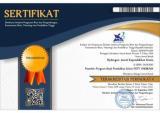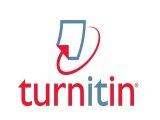The Influence of Solution Concentration and pH for Removal Indigo Carmine using Banana Stem as a Biosorbent
DOI:
https://doi.org/10.33394/hjkk.v11i6.9844Keywords:
banana stem, adsorption, anionic dye, batch, isotermAbstract
The textile industry is one sector that generates effluent containing a significant quantity of pollutants, including dyes, and thus has an effect on the environment. Synthetic dyes, which are toxic and difficult to degrade, are utilized extensively in the textile industry. Therefore, a new study utilizes banana stems as a cost-effective biosorbent to remove indigo carmine dye. This research aims to investigate the use of banana stem waste as a bisorobent in batch method to adsorption indigo carmine dye. The optimal concentration and pH values are 2 and 900 mg/L, respectively. The interaction between the indigo carmine dye and the banana stems is suggested by the FTIR analysis. Â The solution's indigo carmine dye may be adsorbed by banana stem.
References
Agorku, E. S., Kuvarega, A. T., Mamba, B. B., Pandey, A. C., & Mishra, A. K. (2015). Enhanced visible-light photocatalytic activity of multi-elements-doped ZrO2 for degradation of indigo carmine. Journal of Rare Earths, 33(5), 498–506. https://doi.org/10.1016/S1002-0721(14)60447-6
Ahlawat, A., Jaswal, A. S., & Mishra, S. (2022). Proposed pathway of degradation of indigo carmine and its co-metabolism by white-rot fungus Cyathus bulleri. International Biodeterioration and Biodegradation, 172(March), 105424. https://doi.org/10.1016/j.ibiod.2022.105424
Almeida, J. M. F., Oliveira, É. S., Silva, I. N., De Souza, S. P. M. C., & Fernandes, N. S. (2017). Adsorption of erichrome black T from aqueous solution onto expanded perlite modified with orthophenanthroline. Revista Virtual de Quimica, 9(2), 502–513. https://doi.org/10.21577/1984-6835.20170029
Arenas, C. N., Vasco, A., Betancur, M., & MartÃnez, J. D. (2017). Removal of indigo carmine (IC) from aqueous solution by adsorption through abrasive spherical materials made of rice husk ash (RHA). Process Safety and Environmental Protection, 106(Ic), 224–238. https://doi.org/10.1016/j.psep.2017.01.013
Ariguna, I. W. S. P., Wiratini, N. M., & Sastrawidana, I. D. K. (2014). Degradasi Zat Warna Remazol Yellow Fg Dan Limbah Tekstil Buatan Dengan Teknik Elektrooksidasi. E-Journal Kimia Visvitalis, 2, 127–137.
Basharat, S., Rehman, R., Mahmud, T., Basharat, S., & Mitu, L. (2020). Tartaric Acid-Modified Holarrhena antidysenterica and Citrullus colocynthis Biowaste for Efficient Eradication of Crystal Violet Dye from Water. Journal of Chemistry, 2020. https://doi.org/10.1155/2020/8862167
Batu, M. S., Kolo, M. M., & Taek, M. F. (2023). Utilization of Borrasus flabellifer L. Palm Coir Activated with Potassium Hydroxide (KOH) as an Efficient Adsorbent for Rhodamine B Dye Removal. Jurnal Kependidikan Kimia, 11(3), 296–304.
Chong, Z. T., Soh, L. S., & Yong, W. F. (2023). Valorization of agriculture wastes as biosorbents for adsorption of emerging pollutants: Modification, remediation and industry application. Results in Engineering, 17(February), 100960. https://doi.org/10.1016/j.rineng.2023.100960
Dahiru, M., Zango, Z. U., & Haruna, M. A. (2018). Cationic Dyes Removal Using Low-Cost Banana Peel Biosorbent. American Journal of Materials Science, 8(2), 32–38. https://doi.org/10.5923/j.materials.20180802.02
Febriani, A., Umaro, S. A., Nursa’adah, E., & Firdaus, M. L. (2022). Kapasitas Adsorpsi Zat Warna Malachite Green Dan Violet Dye Menggunakan Metal Organic Frameworks (Fe-BDC). Hydrogen : Jurnal Kependidikan Kimia, 10(2), 61–72.
GULYUZ, U. (2021). Egg White Cryogel for Removal of Methylene Blue from Aqueous Solution. International Journal of Environment and Geoinformatics, 8(3), 328–336. https://doi.org/10.30897/ijegeo.879835
Harrache, Z., Abbas, M., Aksil, T., & Trari, M. (2019). Thermodynamic and kinetics studies on adsorption of Indigo Carmine from aqueous solution by activated carbon. Microchemical Journal, 144(September 2018), 180–189. https://doi.org/10.1016/j.microc.2018.09.004
Hatimah, H., Indah, D. R., Wardani, I. K., Kimia, P. P., Mandalika, U. P., No, J. P., Pendidikanolahraga, P., Mandalika, U. P., & No, P. (2022). Efisiensi Adsorpsi Metilen Biru Menggunakan Karbon Baggase Teraktivasi menggunakan elektroda PVC dan karbon ( Riyanto , 2013 ), metode fotokatalitik menggunakan menimbulkan masalah bagi sekitar . Komponen kimia utama ampas tebu adalah serat selulosa ,. 10(2).
Hevira, L., Rahmi, A., Zein, R., Zilfa, Z., & Rahmayeni, R. (2020). The fast and of low-cost-adsorbent to the removal of cationic and anionic dye using chicken eggshell with its membrane. Mediterranean Journal of Chemistry, 10(3), 294–301. https://doi.org/10.13171/mjc02003261271lh
Hevira, L., Zilfa, Rahmayeni, Ighalo, J. O., Aziz, H., & Zein, R. (2021). Terminalia catappa shell as low-cost biosorbent for the removal of methylene blue from aqueous solutions. Journal of Industrial and Engineering Chemistry, 97, 188–199. https://doi.org/10.1016/j.jiec.2021.01.028
Hevira, L., Zilfa, Rahmayeni, Ighalo, J. O., & Zein, R. (2020). Biosorption of indigo carmine from aqueous solution by Terminalia Catappa shell. Journal of Environmental Chemical Engineering, 8(5), 104290. https://doi.org/10.1016/j.jece.2020.104290
Kekes, T., & Tzia, C. (2020). Adsorption of indigo carmine on functional chitosan and β-cyclodextrin/chitosan beads: Equilibrium, kinetics and mechanism studies. Journal of Environmental Management, 262(November 2019), 110372. https://doi.org/10.1016/j.jenvman.2020.110372
Kragović, M., Stojmenović, M., Petrović, J., Loredo, J., Pašalić, S., Nedeljković, A., & Ristović, I. (2019). Influence of Alginate Encapsulation on Point of Zero Charge (pH pzc ) and Thermodynamic Properties of the Natural and Fe(III)-Modified Zeolite. Procedia Manufacturing, 32, 286–293. https://doi.org/10.1016/j.promfg.2019.02.216
Kuete, I.-H. T., Tchuifon Tchuifon, R. D., Bopda, A., Sadeu Ngakou, C., Nche, G. N. A., & Gabche Anagho, S. (2022). Adsorption of Indigo Carmine onto Chemically Activated Carbons Derived from the Cameroonian Agricultural Waste Garcinia cola Nut Shells and Desorption Studies. Journal of Chemistry, 2022. https://doi.org/10.1155/2022/1236621
Kumar, A. M., & Raju, A. I. (2020). Adsorption of metformin from an aqueous solution by Fe-ZSM-5 nano-adsorbent_ Isotherm, kinetic and thermodynamic studies _ Elsevier Enhanced Reader. Journal of Critical Reviews, 07(04), 4547–4563.
Lim, L. B. L., Priyantha, N., Fang, X. Y., & Mohamad Zaidi, N. A. H. (2017). Artocarpusodoratissimus peel as a potential adsorbent in environmental remediation to remove toxic Rhodamine B dye. Journal of Materials and Environmental Science, 8(2), 494–502.
Maghri, I., Kenz, A., Elkouali, M., Tanane, O., & Talbi, M. (2012). Textile Dyes removal from industrial waste water by mytilus edulis shells. 3(1), 121–136.
Misran, E., Bani, O., Situmeang, E. M., & Purba, A. S. (2022). Banana stem based activated carbon as a low-cost adsorbent for methylene blue removal: Isotherm, kinetics, and reusability. Alexandria Engineering Journal, 61(3), 1946–1955. https://doi.org/10.1016/j.aej.2021.07.022
Musić, S., Filipović-Vinceković, N., & Sekovanić, L. (2011). Precipitation of amorphous SiO2 particles and their properties. Brazilian Journal of Chemical Engineering, 28(1), 89–94. https://doi.org/10.1590/S0104-66322011000100011
Öztürk, A., Bayol, E., & Abdullah, M. I. (2020). Characterization of the biosorption of fast black azo dye K salt by the bacterium Rhodopseudomonas palustris 51ATA strain. Electronic Journal of Biotechnology, 46, 22–29. https://doi.org/10.1016/j.ejbt.2020.05.002
Ramadhani, P., Chaidir, Z., Zilfa, Tomi, Z. B., Rahmiarti, D., & Zein, R. (2020). Shrimp shell (Metapenaeus monoceros) waste as a low-cost adsorbent for metanil yellow dye removal in aqueous solution. Desalination and Water Treatment, 197, 413–423. https://doi.org/10.5004/dwt.2020.25963
Samchetshabam, G., Hussan, A., Choudhury, T. G., & Gita, S. (2017). Impact of Textile Dyes Waste on Aquatic Environments and its Treatment Wastewater Management View project Tribal Sub Plan View project. Environment & Ecology, 35(September), 2349–2353.
Secula, M. S., Crežescu, I., & Petrescu, S. (2011). An experimental study of indigo carmine removal from aqueous solution by electrocoagulation. Desalination, 277(1–3), 227–235. https://doi.org/10.1016/j.desal.2011.04.031
Singh, M., Ahsan, M., Pandey, V., Singh, A., Mishra, D., Tiwari, N., & Singh, P. (2022). Comparative assessment for removal of anionic dye from water by different waste ‑ derived biochar vis a vis reusability of generated sludge. Biochar, 1–17. https://doi.org/10.1007/s42773-022-00140-7
Stavrinou, A., Aggelopoulos, C. A., & Tsakiroglou, C. D. (2018). Exploring the adsorption mechanisms of cationic and anionic dyes onto agricultural waste peels of banana, cucumber and potato: Adsorption kinetics and equilibrium isotherms as a tool. Journal of Environmental Chemical Engineering, 6(6), 6958–6970. https://doi.org/10.1016/j.jece.2018.10.063
Sulistyowati, N., Sriyanti, S., & Darmawan, A. (2018). Effect of Acid on Natural Zeolite Dealumination on Indigo Carmine Adsorption Capability. Jurnal Kimia Sains Dan Aplikasi, 21(2), 102–106. https://doi.org/10.14710/jksa.21.2.102-106
Zein, R., Akmal, C., Safni, S., Fauzia, S., Ramadhani, P., & Studies, T. (2023). Banana Stem ( Musa balbisiana Colla ) as Potential Biosorbent to Remove. 45(3).
Zein, R., Purnomo, J. S., Ramadhani, P., Alif, M. F., & Safni, S. (2022). Lemongrass (Cymbopogon nardus) leaves biowaste as an effective and low-cost adsorbent for methylene blue dyes removal: isotherms, kinetics, and thermodynamics studies. Separation Science and Technology (Philadelphia), 57(15), 2341–2357. https://doi.org/10.1080/01496395.2022.2058549
Zein, R., Ramadhani, P., Aziz, H., & Suhaili, R. (2019). Pensi shell (Corbicula moltkiana)as a biosorbent for metanil yellow dyes removal: pH and equilibrium model evaluation. Jurnal Litbang Industri, 15–22.
Zein, R., Tomi, Z. B., Fauzia, S., & Zilfa, Z. (2020). Modification of rice husk silica with bovine serum albumin (BSA) for improvement in adsorption of metanil yellow dye. Journal of the Iranian Chemical Society, 17(10), 2599–2612. https://doi.org/10.1007/s13738-020-01955-6
Downloads
Published
How to Cite
Issue
Section
Citation Check
License
License and Publishing Agreement
In submitting the manuscript to the journal, the authors certify that:
- They are authorized by their co-authors to enter into these arrangements.
- The work described has not been formally published before, except in the form of an abstract or as part of a published lecture, review, thesis, or overlay journal.
- That it is not under consideration for publication elsewhere,
- That its publication has been approved by all the author(s) and by the responsible authorities – tacitly or explicitly – of the institutes where the work has been carried out.
- They secure the right to reproduce any material that has already been published or copyrighted elsewhere.
- They agree to the following license and publishing agreement.
Copyright
Authors who publish with Hydrogen: Jurnal Kependidikan Kimia agree to the following terms:
- Authors retain copyright and grant the journal right of first publication with the work simultaneously licensed under a Creative Commons Attribution License (CC BY-SA 4.0) that allows others to share the work with an acknowledgment of the work's authorship and initial publication in this journal.Â
- Authors are able to enter into separate, additional contractual arrangements for the non-exclusive distribution of the journal's published version of the work (e.g., post it to an institutional repository or publish it in a book), with an acknowledgment of its initial publication in this journal.
- Authors are permitted and encouraged to post their work online (e.g., in institutional repositories or on their website) prior to and during the submission process, as it can lead to productive exchanges, as well as earlier and greater citation of published work.
Licensing for Data Publication
Hydrogen: Jurnal Kependidikan Kimia uses a variety of waivers and licenses, that are specifically designed for and appropriate for the treatment of data: Open Data Commons Attribution License, http://www.opendatacommons.org/licenses/by/1.0/ (default) Other data publishing licenses may be allowed as exceptions (subject to approval by the editor on a case-by-case basis) and should be justified with a written statement from the author, which will be published with the article.









